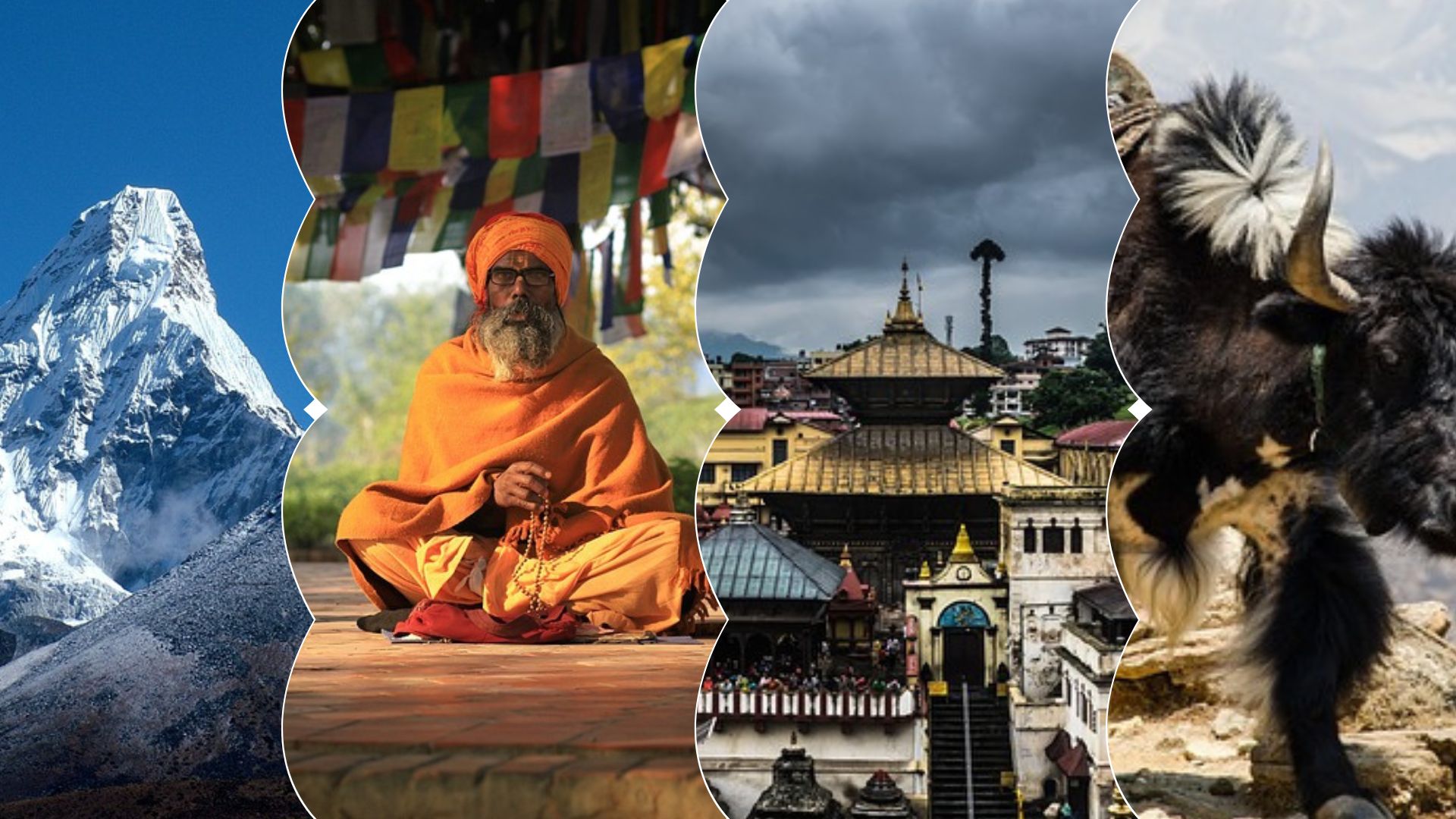Nepal, a land of majestic mountains and diverse cultures, is a heaven for trekkers and adventurers from around the world. Located in the heart of the Himalayas, Nepal offers a wide range of trekking experiences, from challenging high-altitude expeditions to relaxed walks through lush valleys. The country’s unique blend of natural beauty and rich cultural heritage makes it an unparalleled destination for trekking enthusiasts.
Whether you’re standing at the base of the world’s tallest peak or wandering through ancient villages, trekking in Nepal is an unforgettable journey that connects you with nature, history, and the warmth of the local people. In this blog, I will explore the top trekking routes, popular mountains, and everything you need to know to embark on a trekking adventure in Nepal.
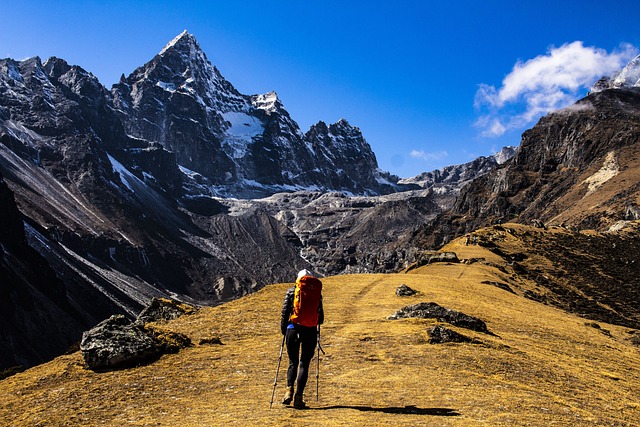
Why Trekking in Nepal?
Nepal is more than just a trekking destination; it is an experience that engages all your senses. The towering peaks of the Himalayas, the deep valleys, the cascading rivers, and the vibrant cultures make trekking in Nepal a unique adventure. Here’s why trekking in Nepal should be on every adventurer’s bucket list:
- Rich Cultural Experiences: Trekking in Nepal is not just about mountains; it’s also about the people who live there. You’ll pass through remote villages where traditional lifestyles are still very much alive. The Sherpas, Gurungs, Tamangs, and other ethnic groups offer a glimpse into a way of life that has remained unchanged for centuries.
- Stunning Landscapes: The landscapes in Nepal are breathtaking. From terraced fields and dense forests to alpine meadows and glacial moraines, the diversity is astounding. And, of course, the snow-capped peaks of the Himalayas dominate the skyline, offering views that will stay with you forever.
- Diverse Flora and Fauna: The trekking routes in Nepal take you through some of the most biodiverse regions in the world. You can encounter everything from subtropical forests filled with rhododendrons and bamboo to high-altitude deserts with hardy shrubs and grasses. Wildlife enthusiasts might spot animals like red pandas, snow leopards, and Himalayan tahrs.
- Adventure and Challenge: Whether you’re a seasoned trekker looking for a challenge or a beginner wanting to explore the mountains, Nepal has something for everyone. The trekking routes vary in difficulty, allowing you to choose an adventure that suits your fitness level and experience.
Top Trekking Routes in Nepal.
1. Everest Base Camp Trek
Overview: The Everest Base Camp Trek is one of the most iconic treks in the world, leading you to the base of Mount Everest, the highest peak on Earth. This trek offers stunning views of Everest and its neighboring peaks, as well as a chance to experience the Sherpa culture in the high-altitude villages of the Khumbu region.
Difficulty Level: Moderate to Challenging
Highlights:
- Scenic flight to Lukla
- Namche Bazaar, the gateway to Everest
- Tengboche Monastery
- Iconic view of Mt. Ama Dablam
- Kala Patthar viewpoint
- Base Camp of Mount Everest
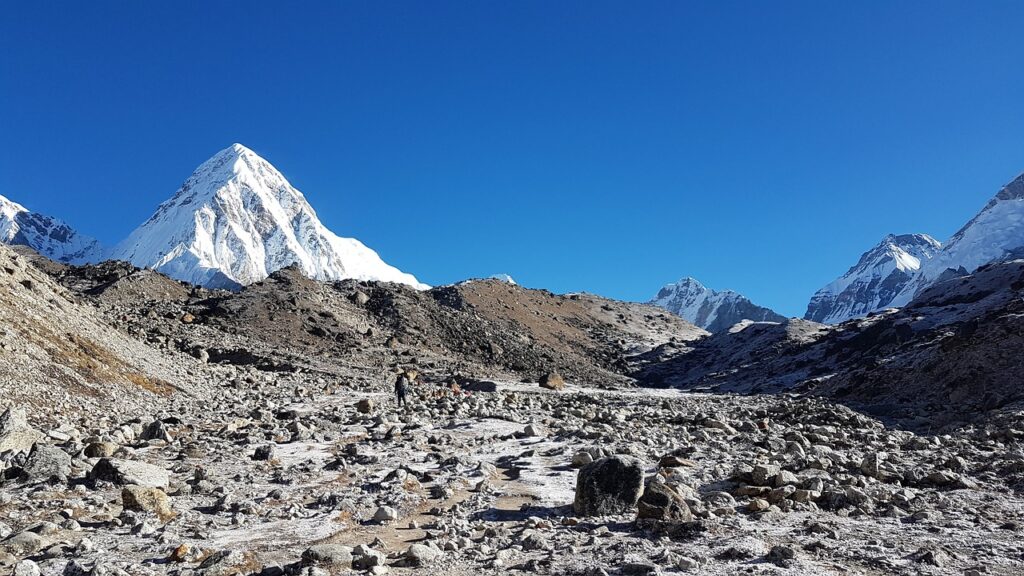
2. Annapurna Circuit Trek
Overview: The Annapurna Circuit Trek is often described as one of the best long-distance treks in the world. It takes you around the Annapurna massif, offering a wide variety of landscapes, from subtropical forests to high-altitude deserts. The trek also provides insights into the culture and lifestyle of the people living in the Annapurna region.
Difficulty Level: Moderate to Challenging
Highlights:
- Crossing the Thorong La Pass (5,416m)
- Views of Annapurna, Dhaulagiri, and Machapuchare
- The holy town of Muktinath
- Diverse landscapes and cultures
- Hot springs at Tatopani

3. Manaslu Circuit Trek
Overview: The Manaslu Circuit Trek is a challenging trek that offers a remote and less-crowded alternative to the Annapurna and the Everest region. The trek circles Mount Manaslu, the eighth-highest mountain in the world, and takes you through some of the most beautiful and untouched regions of Nepal.
Difficulty Level: Challenging
Highlights:
- Larkya La Pass (5,160m)
- Stunning views of Mount Manaslu
- Remote villages and Buddhist monasteries
- Rich cultural experience
- Diverse landscapes from tropical forests to high-altitude deserts
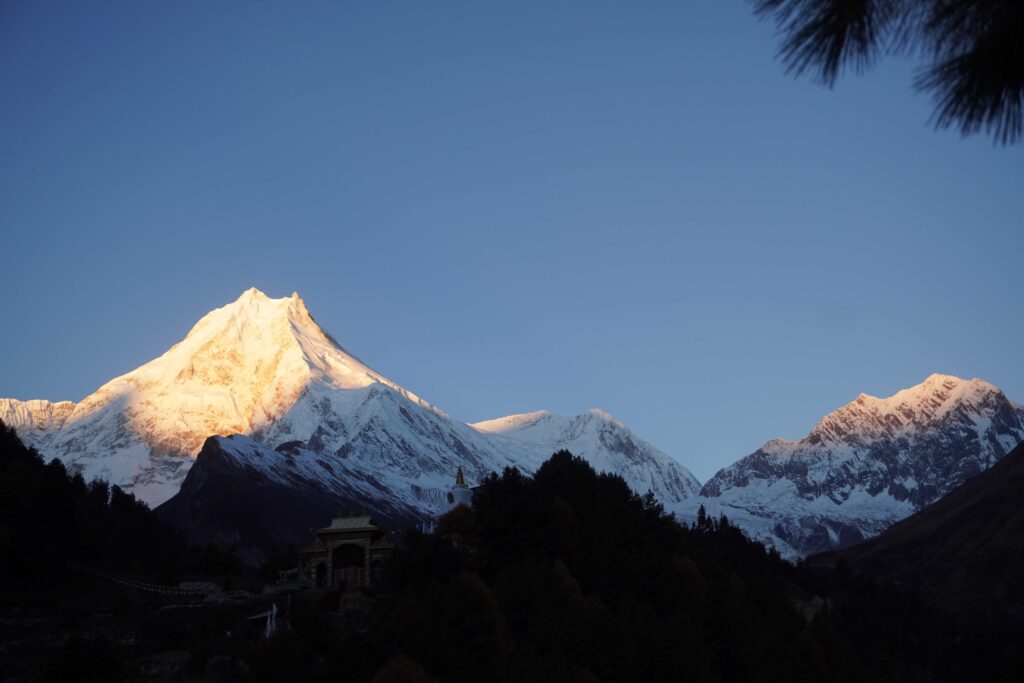
4. Langtang Valley Trek
Overview: The Langtang Valley Trek is a relatively short and accessible trek that takes you close to the Tibetan border. The trek offers stunning views of the Langtang range and allows you to explore the beautiful Langtang National Park, home to diverse flora and fauna.
Difficulty Level: Moderate
Highlights:
- Kyanjin Gompa monastery
- Views of Langtang Lirung and other peaks
- Langtang National Park
- Tamang culture and hospitality
- Short and accessible from Kathmandu
5. Gosaikunda Trek
Overview: The Gosaikunda Trek is a spiritual and scenic trek that takes you to the sacred Gosaikunda Lake, which is believed to be the abode of Lord Shiva. The trek offers stunning views of the Langtang range and takes you through lush forests, alpine meadows, and traditional villages.
Difficulty Level: Moderate to Challenging
Highlights:
- Sacred Gosaikunda Lake
- Panoramic views of the Langtang and Ganesh Himal ranges
- Rhododendron and oak forests
- Rich Tamang culture
- Spiritual and cultural experience
6. Upper Mustang Trek
Overview: The Upper Mustang Trek takes you to the remote and ancient kingdom of Mustang, located in the rain shadow of the Himalayas. The trek offers a unique experience as you explore the arid landscapes, ancient monasteries, and traditional Tibetan culture that has been preserved for centuries.
Difficulty Level: Moderate
Highlights:
- The walled city of Lo Manthang
- Ancient Tibetan monasteries
- Unique desert-like landscapes
- Rich Tibetan culture and history
- Restricted area, requiring special permits
7. Makalu Base Camp Trek
Overview: The Makalu Base Camp Trek is a challenging and remote trek that takes you to the base of Mount Makalu, the fifth-highest mountain in the world. The trek offers stunning views of Everest, Lhotse, and other peaks, as well as a chance to explore the untouched wilderness of the Makalu-Barun National Park.
Difficulty Level: Challenging
Highlights:
- Makalu Base Camp (4,870m)
- Views of Everest, Lhotse, and Kanchenjunga
- Makalu-Barun National Park
- Remote and less-traveled route
- Rich biodiversity and pristine nature
Popular Mountains Along the Trekking Routes
Nepal is home to some of the highest and most famous mountains in the world. These peaks are
not only popular among climbers but also provide stunning backdrops for trekkers. Here are some of the most popular mountains you’ll encounter along the trekking routes:
1. Mount Everest (8,848m)
Mount Everest, the highest mountain in the world, is the ultimate destination for trekkers and climbers alike. The Everest Base Camp Trek offers breathtaking views of this majestic peak, along with the opportunity to experience the rich culture of the Sherpa people who live in its shadow.

2. Mount Annapurna (8,091m)
Mount Annapurna, the tenth-highest mountain in the world, is the centerpiece of the Annapurna Circuit Trek. The trek offers stunning views of the Annapurna massif, as well as the chance to explore diverse landscapes and cultures.
3. Mount Manaslu (8,163m)
Mount Manaslu, the eighth-highest mountain in the world, is the focal point of the Manaslu Circuit Trek. The trek takes you around this majestic peak, offering stunning views and a remote, less-crowded experience.
4. Mount Dhaulagiri (8,167m)
Mount Dhaulagiri, the seventh-highest mountain in the world, is visible from several trekking routes in the Annapurna region. The Dhaulagiri Circuit Trek offers a challenging and rewarding experience, taking you around this massive peak.
5. Mount Makalu (8,485m)
Mount Makalu, the fifth-highest mountain in the world, is the main attraction of the Makalu Base Camp Trek. The trek offers stunning views of this isolated and remote peak, as well as the chance to explore the pristine wilderness of the Makalu-Barun National Park.
6. Mount Langtang Lirung (7,227m)
Mount Langtang Lirung is the highest peak in the Langtang region and is the main attraction of the Langtang Valley Trek. The trek offers stunning views of this beautiful mountain, as well as the opportunity to explore the rich culture and biodiversity of the Langtang National Park.
7. Mount Nilgiri (7,061m)
Mount Nilgiri is a prominent peak in the Annapurna region and is visible from several trekking routes, including the Annapurna Circuit and the Upper Mustang Trek. The mountain offers stunning views and adds to the beauty of the surrounding landscapes.
Trekking Seasons in Nepal
Nepal has four distinct trekking seasons, each offering a different experience. The best time to trek depends on the route you choose and your personal preferences.
1. Autumn (September to November)
Autumn is the most popular trekking season in Nepal. The weather is stable, with clear skies and mild temperatures, making it the ideal time for trekking. The views are spectacular, and the trails are bustling with trekkers from all over the world.
2. Spring (March to May)
Spring is another popular trekking season in Nepal. The weather is warm, and the trails are lined with blooming rhododendrons and other wildflowers. This is also the time when climbers attempt to summit Everest and other high peaks, adding to the excitement on the trails.
3. Winter (December to February)
Winter trekking in Nepal is less popular due to the cold temperatures and heavy snowfall at higher altitudes. However, the lower-altitude treks, such as the Ghorepani Poon Hill Trek, can still be enjoyed during this time. The trails are quieter, and the views of snow-capped peaks are stunning.
4. Monsoon (June to August)
The monsoon season brings heavy rainfall to most parts of Nepal, making trekking difficult and less enjoyable. However, the rain shadow areas of Upper Mustang and Dolpo offer a unique trekking experience during this time. The landscapes are lush and green, and the trails are almost empty.
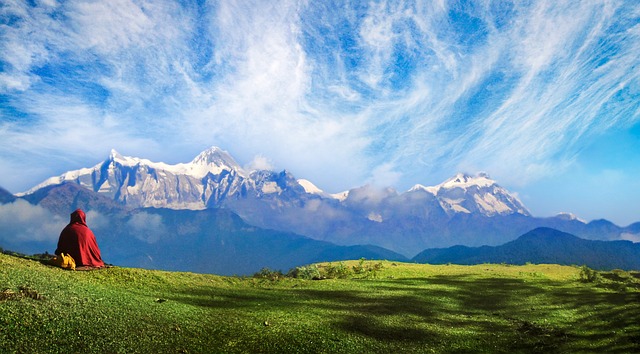
Preparation for Trekking in Nepal
Trekking in Nepal requires careful preparation to ensure a safe and enjoyable experience. Here are some essential tips to help you prepare for your trek:
- Physical Fitness
Trekking in Nepal involves walking for several hours a day, often on steep and uneven terrain. It is important to be physically fit and prepared for the challenges of trekking. Regular exercise, including cardiovascular training, strength training, and hiking, is recommended before embarking on a trek. Necessary Permits and Paperwork
Most trekking routes in Nepal require permits, such as the TIMS (Trekkers’ Information Management System) card and the Annapurna Conservation Area Permit (ACAP) or Sagarmatha National Park Permit. Make sure to obtain the necessary permits before starting your trek.- Packing Essentials
Packing the right gear is crucial for a successful trek. Some essential items include:
Trekking boots with good ankle support
Warm clothing, including a down jacket and thermal layers
Rain gear
Sleeping bag
Trekking poles
First aid kit and personal medications
Water purification tablets
Sunscreen, sunglasses, and a hat. - Acclimatization and Altitude Sickness
Acclimatization is key to avoiding altitude sickness, which can be life-threatening if not properly managed. It is important to ascend slowly, take rest days, and stay hydrated. Familiarize yourself with the symptoms of altitude sickness, such as headaches, nausea, and dizziness, and descend immediately if symptoms worsen.
Cultural Aspects of Trekking
Trekking in Nepal offers a unique opportunity to immerse yourself in the rich cultural heritage of the Himalayan people. Here are some cultural aspects to keep in mind during your trek:
- Interaction with Local Communities
The people of the Himalayas are known for their warmth and hospitality. As you trek through remote villages, you will have the chance to interact with locals and learn about their customs and traditions. Be respectful of local cultures and ask for permission before taking photographs. - Festivals and Traditions
Nepal is a land of festivals, and you may have the opportunity to witness or participate in traditional celebrations during your trek. Festivals like Dashain, Tihar, and Mani Rimdu are celebrated with great enthusiasm in the mountains. - Homestays and Tea Houses
One of the highlights of trekking in Nepal is staying in tea houses or homestays. These simple lodges offer basic accommodation and meals, allowing you to experience the local way of life. It is customary to eat where you stay, as this supports the local economy.

Safety and Tips
Trekking in Nepal is generally safe, but it is important to take precautions to ensure a safe and enjoyable experience. Here are some safety tips to keep in mind:
- Importance of Guides and Porters
Hiring a guide and porter can enhance your trekking experience and ensure your safety. Guides are knowledgeable about the routes and can help you navigate the trails, while porters can carry your heavy gear, allowing you to trek more comfortably. - Staying Safe in the Mountains
Always stay on marked trails and follow the advice of your guide. Avoid trekking alone, especially in remote areas. Carry a map, compass, and a fully charged phone with emergency contacts. Be aware of weather conditions and be prepared to adjust your plans if necessary. - Environmental Responsibility
Trekking in Nepal’s pristine environments requires responsible behavior to minimize your impact. Follow the “Leave No Trace” principles by packing out all trash, avoiding the use of single-use plastics, and respecting wildlife and natural resources.
Conclusion
Trekking in Nepal is a once-in-a-lifetime adventure that offers breathtaking landscapes, rich cultural experiences, and the thrill of exploring some of the world’s highest mountains. Whether you’re trekking to Everest Base Camp, exploring the remote valleys of Manaslu, or discovering the ancient kingdom of Mustang, Nepal has something to offer every trekker.
With proper preparation, a respect for the local culture, and a spirit of adventure, your trekking experience in Nepal will be one that you cherish for years to come. So lace up your boots, pack your backpack, and get ready to embark on an unforgettable journey in the heart of the Himalayas.

